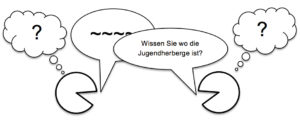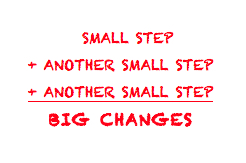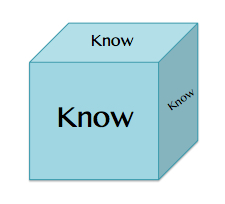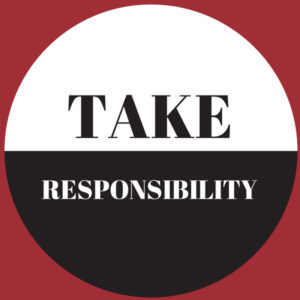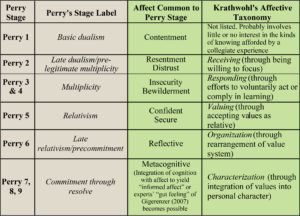by Dr. Ed Nuhfer, California State Universities (retired)
Courage is a metacognitive quality that enables not having our actions limited or dictated by fear. Academic courage is a unique category of “moral courage.” Unlike physical acts of courage that occur in a brief time span, moral courage governs a day-to-day way of being and acting in practice, despite recognizing the forces that merit fear. Martin (2011) describes academic courage as perseverance through academic difficulty in the face of fear. The threatening environments of universities and the nature of courage that educators, particularly faculty developers, need in their professional practice are our focus here. With the notable exceptions of Palmer (2017) and Martin (2011), data-based studies of developed courage by teacher-scholars are nearly nonexistent.
“Fear” inevitably enters nearly all discussions about “courage.” While courage does not exist in the absence of fear, courage is a developed metacognitive capacity; fear is not. Acting with courage becomes possible when a person’s learning involves affective development along with intellectual and ethical development. (See the last blog in this series, Part 3.) Hannah, Sweeney, and Lester (in Pury and Lopez, 2011, pp 125-148) portray acts of courage as the products of a developed “Cognitive-Affective Processing System.” In brief, courage enlists a lot of brainpower.
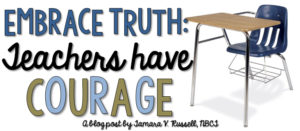
Academic Courage versus Suicidal Tendency
Institutions of higher education produce unique threats, and several are increasing for faculty and faculty developers. The unifying theme for most fear in academia is the potential loss of career and livelihood. Because threatening faculty livelihoods for reasons other than incompetence or ethical violations is a detriment to society, tenure developed in the U. S. as a means to shield scholars from being intimidated and having their voices silenced. But tenure has not always worked perfectly. Tenure-track positions are vanishing as academic staff, with no prospects of tenure or its protections, now replace retiring tenured professors. Increased faculty vulnerability naturally accompanies increased apprehension and fear. People involved in threatening scholars’ livelihoods are politicians & regents boards, administrators, students, and colleagues.
Politicians in parts of the federal government, and a few states, now actively suppress or work to eliminate government researchers and college faculty who work on topics where investigations produce (or might produce) evidence that contradicts partisan advocacy. Political power now is wielded to weaken tenure and eliminate programs that produce knowledge that contradicts authoritarian positions and even university benefactors’ interests. Faculty can suffer reprisals for doing politically-charged scholarship. The World Wide Web and social media open today’s college faculty and students to unprecedented surveillance, so even work performed outside universities with scholarly journals or professional organizations produces risks. Sometimes, faculty can wonder whether every group on the campus has power over them. When faculty state that their careers “live and die by student ratings,” this discloses that they also fear their students. To some faculty, it seems that even students have supervisory power to take away faculty livelihoods. All of these sources of fear represent substantial threats. When a faculty member discloses fear, a developer must never think to trivialize or discount it. The reason for fear is likely real.
College faculty have responsibilities as teachers and scholars. In both, a responsibility provides an obligation to remain current about new knowledge, to add to the knowledge base, and not merely act as dispensers of knowledge. As new evidence validates the increased effectiveness of different instructional methods, teacher-scholars have obligations to maintain command of the current literature and to apply the best available knowledge to serve their students. Yet, doing so poses risks.
Introducing unfamiliar teaching structures to the classroom is not always received favorably by students or by colleagues. Striving to enact nontraditional instructional techniques carries risks of becoming unpopular by not satisfying students with teaching as they expected to be taught. Where the retention of livelihoods rests more on popularity with those who have the power to take livelihood away than on the quality of research achieved or the learning promoted, acting from fear of becoming unpopular has potential consequences.
A courageous action is not rash or suicidal; it recognizes and respects actual threats. The temptation to bulldoze ahead with “best practices” by believing that one has superior knowledge disrespects a genuine threat. Acting courageously respects the threat and works to understand it, but without giving into fear. Acting from courage requires more brainpower than does just giving up. Building capacity to enact academic courage involves a lot of work. A courageous approach may strive to find empathy for colleagues and students, seek awareness of the reasons for their dissatisfaction and will work to gain an understanding of what changes will be needed for those in opposition to begin to accept and support the most beneficial actions. A failed first attempt will serve to inform later efforts.
Face management as a Cultural Challenge to Courage
Face management seeks to advance oneself socially through associating and being seen with those who are popular and/ or influential. Face management is a way of life in many organizations. Its dark side appears when advancing self involves marginalizing those perceived as unpopular or just different. Faculty being ostracized can include those who are struggling to make changes and newcomers with new ideas, perhaps controversial to local established practices, who are striving to be accepted and valued. Stanford professor Robert I. Sutton referenced such face-managing actions as “kiss-up; slap-down,” and recognized that the behavior could render toxic the culture of an entire organization–a department, a college, and even an institution. Ostracism is something any individual should fear. Researchers at the University of British Columbia’s Sauder School of Business studied the impact of ostracism on employee health and morale and discovered that it can be even more harmful to one’s mental and physical well-being than harassment or other forms of bullying. For a faculty developer, supporting those ostracized entails risks of also becoming marginalized.
That’s a hazard in faculty development work because faculty development is a helping profession. A faculty developer’s responsibility is to support faculty who are in need of help, and they seldom are people who hold popularity or power. Anyone who aspires to be a faculty developer needs to realize that he/she will likely experience such a threat multiple times. Often, faculty in need are also being marginalized, struggling to succeed and sometimes suffering the consequences of being caught crossways in a toxic, unit-level culture of kiss-up-slap-down. Unfortunately, face-managing cultures are tolerated, even nurtured, in universities, perhaps because courage isn’t taught in college.
While the exercise of academic courage in faculty development requires knowledge and skills, both are external qualities. Acting with academic courage is different. It’s an internal capacity that infuses knowledge and skills with empathy and affect. Internal development is a ceaseless metacognitive reflection, and it is a LOT of work.
References
Martin, A. J. (2011) Courage in the Classroom: Exploring a New Framework Predicting Academic Performance and Engagement. School Psychology Quarterly 26 2 145-160.
Palmer, P. (2017) The Courage to Teach: Exploring the Inner Landscape of a Teacher’s Life. 20th Ed. San Francisco, CA: Wiley.
Pury, C. L. S., and S. Lopez, eds. (2011). The Psychology of Courage. Washington DC: American Psychological Association.

